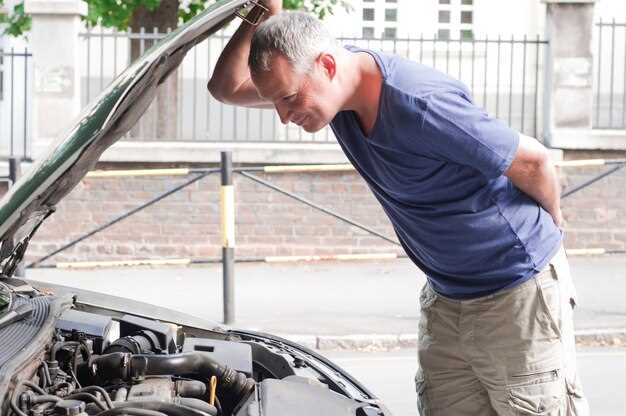
Understanding CV joints and axle damage
- Dominique Kaye
- 0
- Posted on

The constant velocity (CV) joints play a crucial role in the drivetrain system of a vehicle, enabling efficient power transfer from the transmission to the wheels while accommodating suspension movement. These joints are designed to maintain a consistent rotational speed without any significant increase in friction or play, which is essential for smooth vehicle operation. Understanding their function is vital for any car owner to ensure peak performance and longevity of their vehicle.
However, CV joints can experience damage due to various factors, leading to potential issues within the drivetrain. Common causes of CV joint damage include wear and tear from constant use, exposure to extreme environmental conditions, and lack of proper lubrication. Additionally, impacts from potholes or accidents can further compromise the integrity of the joints, increasing the risk of failure and subsequent axle damage. Recognizing these causes can help in proactive maintenance and timely repairs, ultimately enhancing vehicle safety and reliability.
In this article, we will delve into the anatomy of CV joints, how they function within the drivetrain, and the specific factors that contribute to axle damage. By gaining a comprehensive understanding of these components, vehicle owners can make informed decisions regarding maintenance and repair, ensuring their vehicles operate smoothly for years to come.
Identifying Symptoms of CV Joint Failure

Identifying the early signs of constant velocity (CV) joint failure is crucial for maintaining the integrity of your vehicle’s drivetrain. A well-functioning CV joint ensures smooth power transfer from the transmission to the wheels, but when it begins to fail, several symptoms can arise.
One of the most common indicators of CV joint issues is a clicking or popping noise during turns. This sound is typically more pronounced when turning sharply, as the load on the joint increases. Ignoring this noise can lead to further damage to the drivetrain.
Another symptom to look out for is vibration while driving, especially at higher speeds. If the CV joint is damaged, it can cause an imbalance in the drivetrain, resulting in noticeable vibrations that can be felt through the steering wheel and floor of the vehicle.
Additionally, you may notice grease splatter on the inside of your wheels or on the undercarriage of the car. This usually indicates a torn CV boot, allowing grease to escape and exposing the joint to dirt and debris, leading to accelerated wear and eventual failure.
In some cases, a feeling of looseness in the steering or difficulty in steering may also be present, which can result from the deterioration of the CV joint and its mounting. Pay attention to any changes in how your vehicle handles, as this can signal serious issues within the drivetrain.
Finally, if the vehicle begins to pull to one side or experiences a drastic decrease in acceleration, it is essential to have the CV joints and related components inspected immediately. Prompt detection and repair can help prevent more extensive and costly damage to the drivetrain.
Common Factors Leading to Axle Damage

Axle damage can significantly affect vehicle performance and safety. Understanding the common factors that lead to such damage is crucial for proper maintenance and repair. One of the primary causes of axle damage is poorly functioning CV joints. These joints are responsible for transferring power from the vehicle’s transmission to the wheels while allowing for the necessary movement during turning and suspension travel. When CV joints wear out or become damaged, excessive stress is placed on the axle, potentially leading to fractures or breaks.
Inadequate lubrication is another key factor contributing to axle damage. CV joints require proper grease to function effectively. If the grease deteriorates or leaks out, the joint can overheat and wear out quickly, thereby increasing the likelihood of axle failure.
Improper alignment and suspension issues can also lead to axle problems. Misalignment creates uneven pressure on the CV joints and axles, which can accelerate wear and cause early failure. Additionally, hitting potholes, curbs, or other road hazards can lead to sudden shock loads on the axle and joints, resulting in potential damage.
Lastly, corrosion due to exposure to moisture and road salt can weaken the axle over time. Rust can deteriorate both the CV joints and the axle itself, leading to compromised structural integrity. Regular inspections and timely replacement of worn components are essential to prevent these common factors from causing significant damage to the axle.
Preventive Measures for Drivetrain Longevity
Regular maintenance of CV joints is crucial to ensure the longevity of your drivetrain. Inspecting the joints frequently can help detect signs of wear and damage early on. Look for any cracks or tears in the rubber boot that protects the joint, as these can lead to dirt and moisture infiltration, compromising the joint’s integrity.
Applying appropriate lubrication to CV joints is another vital preventive measure. Over time, the grease within these joints can become contaminated or diminish. Ensure that the joints are properly greased during routine servicing to facilitate smooth operation and reduce friction, which can accelerate wear.
Driving habits significantly influence the lifespan of the drivetrain. Avoiding aggressive acceleration, sharp turns, and abrupt stops can minimize stress on the CV joints and axles. Additionally, being cautious when navigating uneven surfaces or potholes can prevent unnecessary shock loads on these components.
Regularly checking and maintaining your vehicle’s suspension system also plays a role in preventing drivetrain damage. Worn suspension components can lead to misalignment, causing more strain on CV joints. A well-maintained suspension helps distribute forces evenly, reducing the risk of joint failure.
Finally, keeping an eye on overall vehicle performance can help identify potential issues related to CV joints and the drivetrain. Unusual noises, vibrations, or the feeling of instability should prompt immediate inspection. Early detection of problems can save you from costly repairs and extend the lifespan of your vehicle’s drivetrain components.
